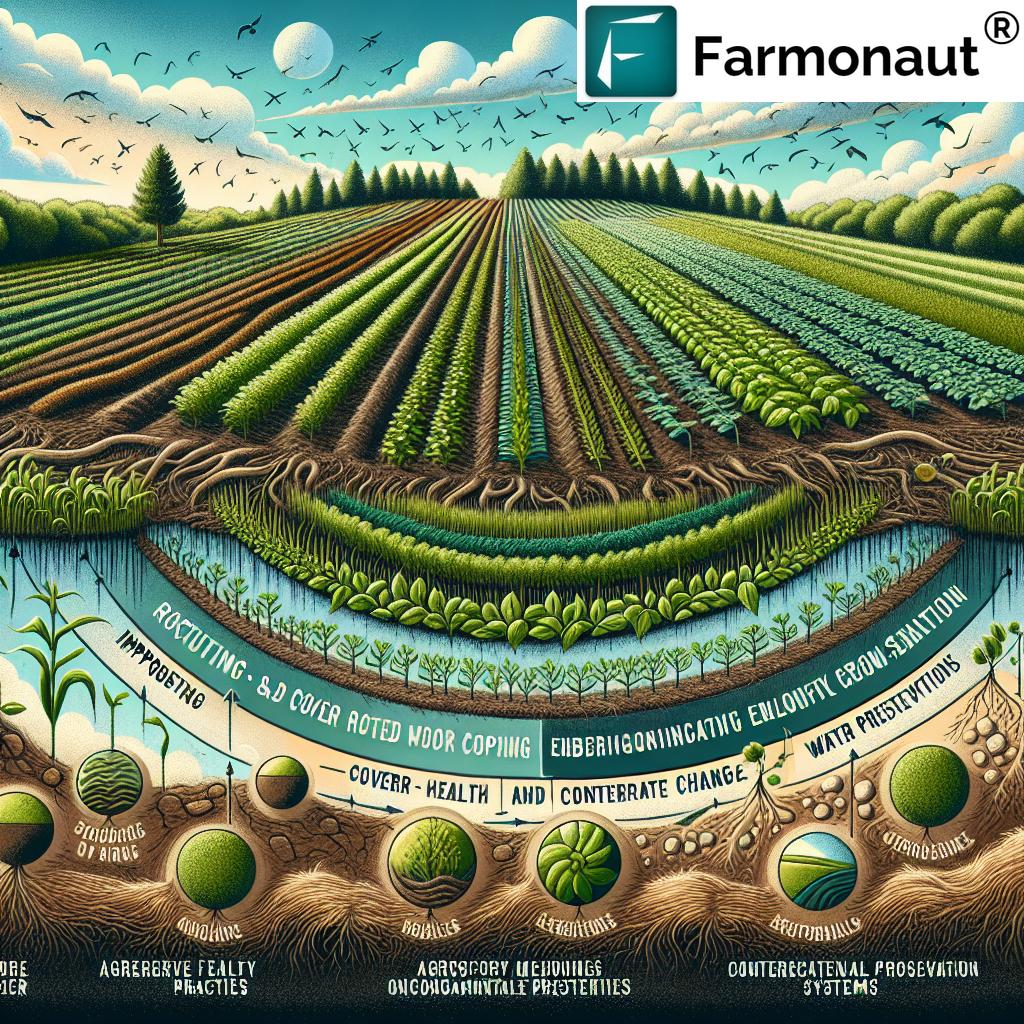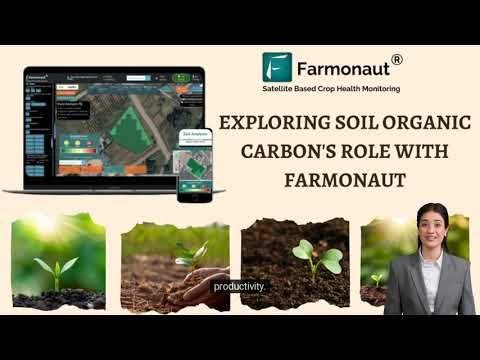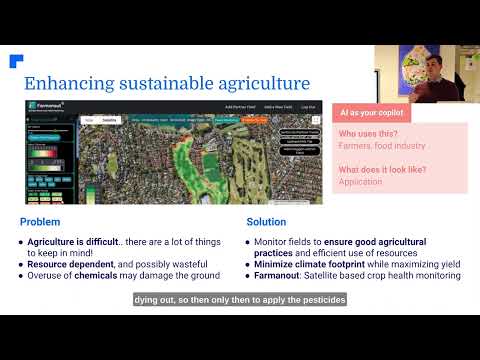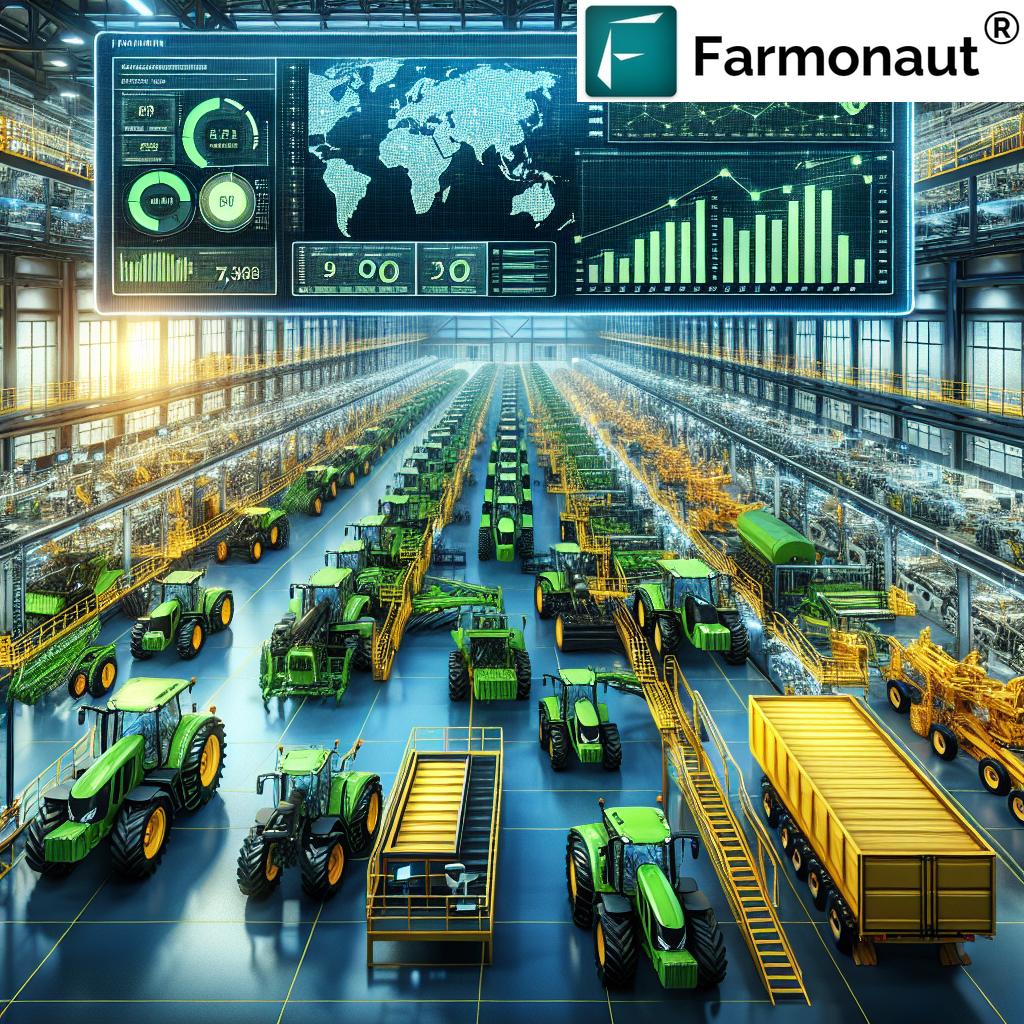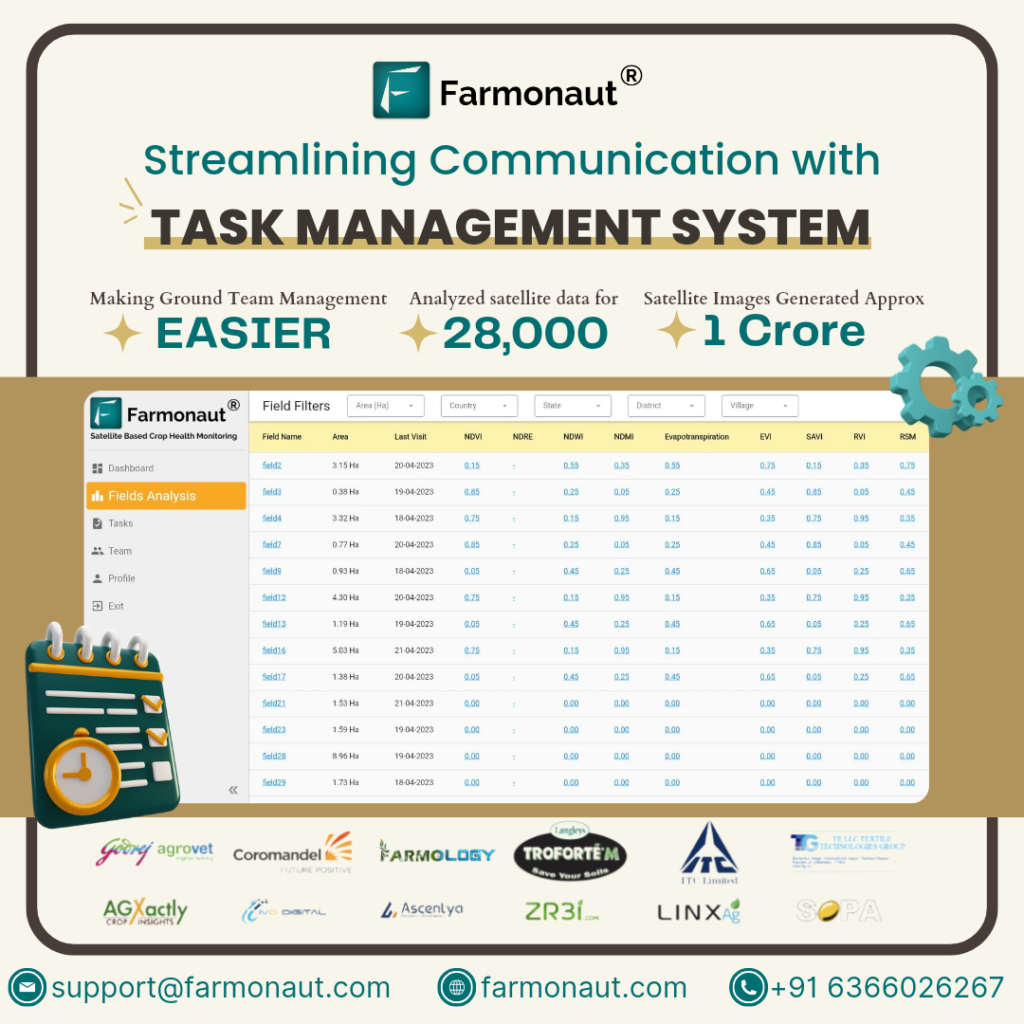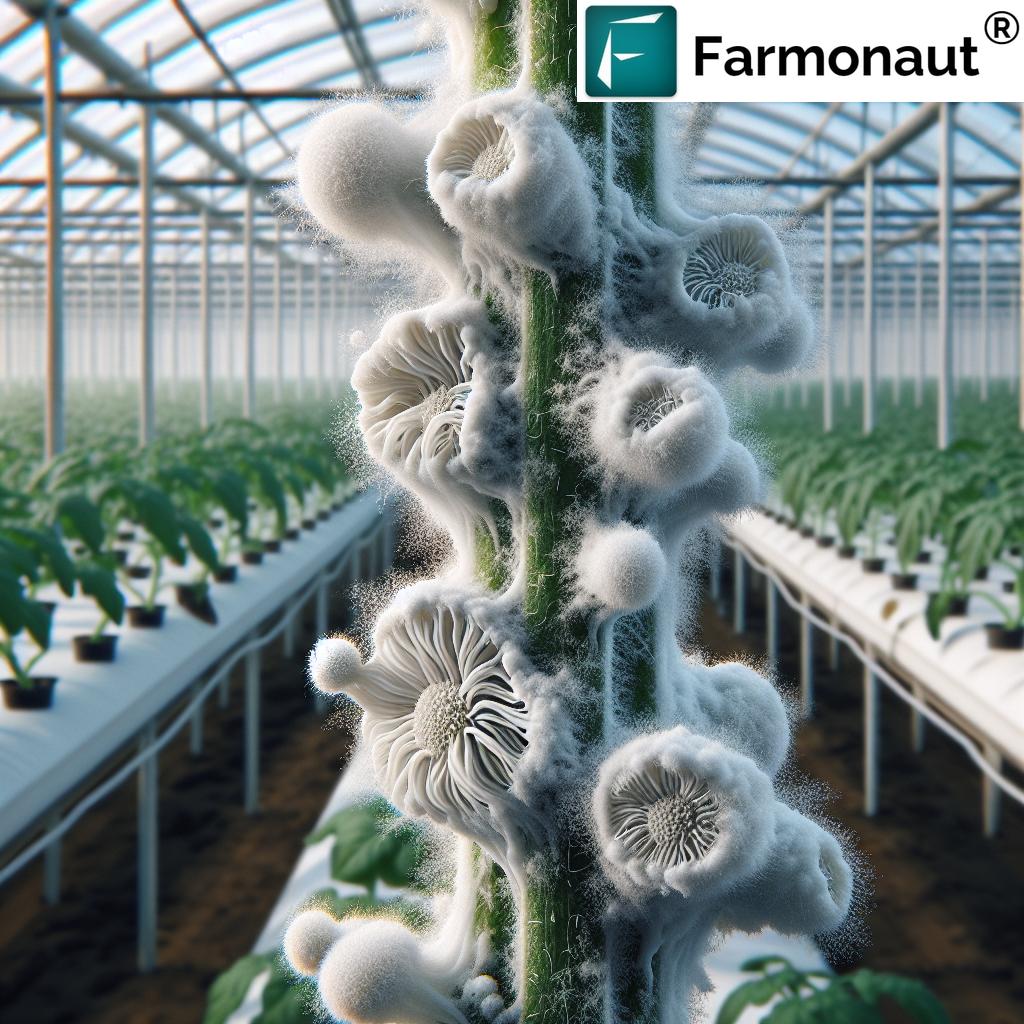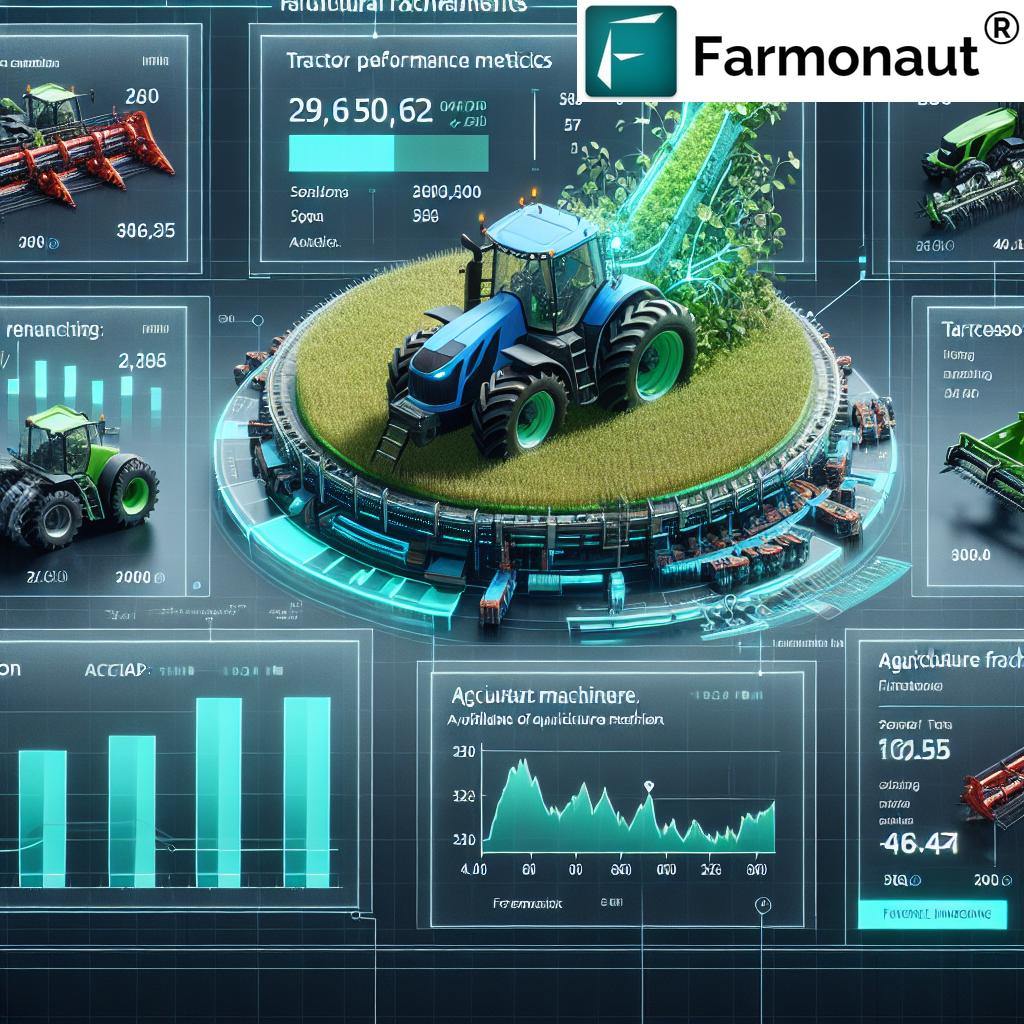Sustainable Agriculture Practices: 7 Soil Health Hacks!
Meta Description: Discover 7 sustainable agriculture practices to boost soil health, increase productivity, and conserve water with organic and regenerative farming methods for a greener future.
Table of Contents
- Introduction
- Key Principles of Sustainable Agriculture
- Sustainable Agriculture Practices: 7 Soil Health Hacks
- Comparative Feature-Benefit Table: Sustainable Agriculture Practices
- Farmonaut’s Technology for Sustainable Agriculture
- Benefits of Sustainable Agriculture
- Challenges and Considerations
- Farmonaut Subscription & Pricing
- FAQ: Sustainable Agriculture & Farmonaut
- Conclusion
“Regenerative farming can increase soil organic matter by up to 21% in just five years.”
Introduction: Why Focus on Sustainable Agriculture?
As our global food system faces mounting pressure from climate change, degraded soils, erratic water resources, pollution, and shrinking biodiversity, one truth becomes crystal clear: we must rethink the way we farm. Sustainable agriculture empowers us to produce food efficiently while preserving and regenerating natural resources for current and future generations. Through innovative, responsible, and regenerative farming methods, we can overcome these challenges. In this blog, we will explore the core principles of sustainable agriculture, reveal 7 proven soil health hacks, and show how combining traditional wisdom with modern solutions—including digital precision tools—builds resilience for our land, livelihoods, and the planet.
Key Principles of Sustainable Agriculture
What does it really mean to embrace sustainable agriculture? At its core, sustainable agriculture connects economic profitability, environmental enhancement, and social responsibility. Let us break down the principles that tie it all together:
- Environmental Health: This includes maintaining soil fertility, conserving water via responsible farming, and minimizing pollution by reducing the use of chemical fertilizers and pesticides.
- Economic Profitability: Our food system must stay viable for farmers and communities. This means increasing productivity, maximizing efficient use of inputs, and adapting practices that cut costs over time.
- Social and Economic Equity: Sustainable agricultural systems are inclusive. They promote access to resources, fair treatment, food security, and support for local communities.
Sustainable Agriculture Practices: 7 Soil Health Hacks
The heart of sustainable agriculture lies in actionable, science-backed strategies that farmers worldwide can adopt. Let us journey through seven of the most effective soil health hacks that unlock higher productivity, better water management, and lower carbon emissions. Each method not only boosts long-term profitability but also enhances ecosystem resilience.
-
1. Crop Rotation and Diversity: The Multi-Crop Advantage
Rotating crops and increasing diversity (such as alternating legumes with cereals) offer remarkable crop rotation benefits. This approach naturally replenishes nutrients, breaks pest and disease cycles, and boosts soil fertility without relying heavily on synthetic chemicals. By allowing each crop to play a specific role—for example, legumes add nitrogen while cereals use it—we maintain soil balance and tap into nature’s regenerative system.
- Reduces need for chemical fertilizers
- Improves yield stability and productivity
- Promotes biodiversity and pollinator habitats
-
2. Cover Cropping: Living Roots All Year
Cover crops such as clover, vetch, or rye are grown during off-seasons or between main crops. Their roots anchor the soil, preventing erosion and increasing organic matter. When incorporated as green manure, they add nutrients directly to the soil and help with water retention. Cover cropping also suppresses weeds and helps in managing pests.
- Reduces soil erosion and nutrient loss
- Improves water management in farming by retaining moisture
- Builds soil biodiversity and organic carbon pools
-
3. Conservation Tillage: Less Disturbance, More Resilience
Traditional plowing can damage soil structure, disrupt microbial colonies, and increase emissions. Conservation tillage—including strip-till, minimum-till, and the popular no-till—minimizes or avoids soil disturbance. In no-till systems, seeds are sown directly into undisturbed fields, preserving soil integrity and reducing fuel use for machinery.
- Enhances rainfall infiltration and water retention
- Reduces runoff and soil erosion by up to 60%
- Decreases carbon emissions and increases carbon sequestration in the soil
-
4. Integrated Pest Management (IPM): Smarter Pest Solutions
Integrated Pest Management (IPM) combines biological, physical, cultural, and (only as a last resort) chemical solutions to outsmart pest outbreaks. This method emphasizes supporting beneficial insect predators, planting resistant crop varieties, and employing rotations to control pest populations.
- Reduces dependence on pesticides lowering pollution
- Minimizes risk of pest resistance
- Supports natural ecosystem balance
-
5. Agroforestry: Integrating Trees with Crops for Resilient Systems
Agroforestry systems strategically combine trees, shrubs, and traditional crops or livestock on the same land, mimicking natural forests. These integrated systems promote year-round cover, enhance soil fertility through leaf fall, increase structural diversity, and provide valuable by-products (fruits, timber, medicinal plants, etc.).
- Improves nutrient cycling and soil health
- Enhances long-term income through additional tree-based products
- Helps sequester carbon for climate change mitigation in agriculture
-
6. Water Management and Precision Irrigation: Using Every Drop Wisely
Water is a finite, precious resource. Efficient water management in farming leverages tools like soil moisture sensors, drip irrigation, and rainwater harvesting. These systems deliver water exactly when, where, and how much crops need—eliminating waste, enhancing crop growth, and protecting both yields and aquifers.
- Improves productivity even during dry spells
- Reduces over-extraction and pollution from runoff
- Optimizes cost savings on water and associated energy inputs
-
7. Organic and Regenerative Farming: Going Beyond “Do No Harm”
Organic farming methods eliminate synthetic fertilizers and pesticides, instead harnessing natural cycles by using compost, crop residues, and approved mineral sources. Regenerative agriculture practices take this further, focusing on the active restoration of soil health—increasing organic matter, deploying rotational grazing, and maximizing plant cover.
- Reduces soil erosion and locks in carbon
- Promotes biodiversity in and above the soil
- Delivers healthy, chemical-free food products for consumers
“Organic practices reduce soil erosion rates by 50% compared to conventional agriculture.”
Comparative Feature-Benefit Table: Sustainable Agriculture Practices
| Sustainable Agriculture Practice | Description | Estimated Improvement in Soil Health (%) | Impact on Water Management | Effect on Crop Productivity | Potential Environmental Benefit |
|---|---|---|---|---|---|
| Crop Rotation | Rotating multiple crops (including legumes and cereals) in succession to disrupt pests and replenish nutrients | 10-20% rise in soil organic matter over 5–7 years | Moderate improvement; better infiltration, reduced runoff | 5–15% yield stability increase, reduced risk of crop failure |
Breaks pest cycles; boosts biodiversity, less pollution from chemicals |
| Cover Cropping | Growing off-season crops to cover soil and provide green manure | 12–18% increase in organic carbon and microbial activity | 10% better water retention; lower erosion |
5–20% higher yields with continuous adoption | Reduces soil erosion by 30–70% |
| Conservation Tillage (No-till/Mintill) | Reducing or eliminating plowing to minimize soil disturbance | 15–21% more organic matter; less compaction | Significantly improved infiltration & retention; up to 30% water savings | Consistent yields, especially with better drought resilience | Cuts greenhouse gas emissions, reduces erosion by 50–70% |
| Organic Fertilizer Application | Using compost, manure, or natural amendments instead of synthetic fertilizers | 15–22% higher microbial diversity and soil health scores | Promotes soil moisture retention and slower nutrient leaching | Steady improvement over time; healthier crops |
Lowers chemical runoff; reduces waterway pollution |
| Integrated Pest Management (IPM) | Combines biological, mechanical, cultural, and chemical controls | Prevents soil contamination from pesticides | Improved water quality due to lower pesticide runoff | Sustained yields, lower input costs | Enhances biodiversity above and below ground |
| Agroforestry | Integrating trees with crops or livestock on the same land | 17–25% higher soil carbon & organic matter (decadal) | Natural shade reduces evapotranspiration; improves microclimate | Multiple revenue streams; risk reduction | Sequesters carbon; increases landscape biodiversity |
| Regenerative Agriculture | Focuses on restoring soil health through minimal tillage, composting, and grazing | Up to 21% organic matter increase in five years | 30% improved water holding capacity | High long-term productivity & resilience | Significant climate mitigation, reduced emissions |
Farmonaut’s Technology for Sustainable Agriculture
We believe precision and actionable data speed up sustainable transitions. Farmonaut delivers powerful tools for responsible, regenerative, and highly productive agriculture:
-
Satellite-Based Crop Health Monitoring: Real-time monitoring of crop health, soil moisture, and vegetation indices to optimize irrigation, fertilizer use, and pest management.
Learn how these insights help improve plantation and forest management advice. - Jeevn AI Advisory System: Delivers field-specific recommendations for better productivity, accurate resource allocation, and timely weather-aware decision making.
- Blockchain-Based Product Traceability: Ensures transparency and security in your farm-to-fork journey. For retailers, food companies, and exporters, discover how product traceability can increase consumer trust and ensure responsible sourcing.
- Fleet & Resource Management: For agribusinesses and large holders, manage logistics, reduce fuel/maintenance costs, and streamline farm operations. Find out how Farmonaut’s fleet tools optimize your farm system.
- Carbon Footprinting: Track and minimize your agricultural emissions, setting science-based carbon reduction goals. Explore the platform’s carbon tool and join the drive for climate change mitigation in agriculture.
- Tailored Solutions for Crop Loans and Insurance: Leverage satellite evidence to access easier crop loans and insurance verification.
- API & Developer Access: Seamlessly integrate our satellite, weather, and advisory data into your custom applications. Perfect for agritech startups and research organizations. API Overview | Developer Docs
Benefits of Sustainable Agriculture: From Soil to Society
Committing to sustainable agriculture produces cascading benefits. Here’s how these practices help not just lands and farmers, but economies and communities at large:
-
Environmental Benefits:
- Reduces pollution by minimizing chemical runoff and synthetic input use.
- Prevents soil erosion and builds soil fertility by maintaining plant cover and organic matter.
- Increases sequestration of carbon for climate change mitigation in agriculture.
- Strengthens landscape and farm-level biodiversity.
-
Economic Benefits:
- Farmers achieve ongoing cost savings by using fewer inputs and making better, data-driven field decisions.
- Diversified farm systems open new income streams (timber, fruits, new markets for organics, carbon credits).
- Improvement in resiliency against crop failure, price shocks, or weather extremes.
-
Social Benefits:
- Strengthens rural community livelihoods.
- Enhances fair labor practices and resource access.
- Ensures long-term food security and nutrition for future generations.
Challenges and Considerations in Transitioning to Sustainable Agriculture
Like any transformative change, the shift to sustainable agriculture brings its own hurdles (but also solutions!):
- Initial Transition Period: In the beginning, yields may temporarily drop as new systems stabilize.
- Knowledge and Training: Mastery of conservation tillage, IPM, and organic techniques needs ongoing support and technical advice. Platforms like Farmonaut offer AI-advisory to bridge this knowledge gap.
- Market Access: Not all markets or supply chains recognize (or pay premiums for) responsible practices. Blockchain traceability can help, by evidencing sustainable sourcing.
- Investment & Resources: New tools (sensors, irrigation systems, monitoring platforms) require capital, but the payback in long-term productivity and cost savings is significant.
- Policy & Incentives: Supportive policy frameworks and subsidies can accelerate the adoption nationwide, as seen in many states.
Farmonaut Subscription & Pricing
Ready to take your farm into the future of sustainability? Farmonaut’s flexible and affordable subscriptions suit individual farmers, agribusinesses, cooperatives, and government agencies, all accessible through Android, iOS, or web apps. Choose what fits your acreage and precision demands—no hardware required!
FAQ: Sustainable Agriculture & Farmonaut
What is sustainable agriculture, and how does it differ from conventional farming?
Sustainable agriculture is an integrated approach that seeks to produce food, conserve natural resources, support economic viability, and promote social equity. Unlike conventional farming—which often relies heavily on chemical inputs and monocultures—sustainable methods prioritize soil health, water conservation, biodiversity, and reduced pollution to ensure long-term sustainability.
What are the most important soil health hacks for farmers?
The top hacks include: crop rotation, cover cropping, conservation tillage (or no-till), IPM (using fewer chemical pesticides), integrating agroforestry systems, efficient water management, and adopting organic/regenerative farming techniques that restore nutrients and sequester carbon.
How does Farmonaut help in implementing sustainable agricultural practices?
Farmonaut leverages satellite and AI-driven farm data to provide real-time crop health monitoring, advisory recommendations, and traceability solutions. This empowers farmers and agribusinesses to apply inputs where and when needed—optimizing yields, saving resources, and cutting unnecessary emissions, all while staying affordable and scalable. No expensive in-field hardware required!
How do conservation tillage and no-till techniques impact climate change mitigation in agriculture?
By reducing soil disturbance, no-till and minimal-till systems improve soil carbon storage, lower fuel consumption, and reduce greenhouse gas emissions. These practices also help retain soil moisture, minimize erosion, and build long-term fertility.
Which Farmonaut app or API is best for me?
Individual farmers: Use the Android, iOS, or Web App for on-field management and instant insights.
Agribusinesses or large farms: Leverage the large scale farm management platform for team and plantation coordination.
Developers: Integrate satellite and weather data with the Farmonaut API and developer documentation. Explore API | Developer Docs
Conclusion: Building a Resilient & Responsible Food System
Sustainable agriculture isn’t just an aspiration—it’s an actionable, science-backed solution for today’s challenges. By adopting regenerative and organic methods, prioritizing soil health, optimizing water and input management, and leveraging innovations like Farmonaut’s digital platform, we can safeguard our land, boost farm profitability, and protect the planet for generations to come. The time to act is now: let’s lead the charge for a sustainable, equitable, and vibrant global food system.


